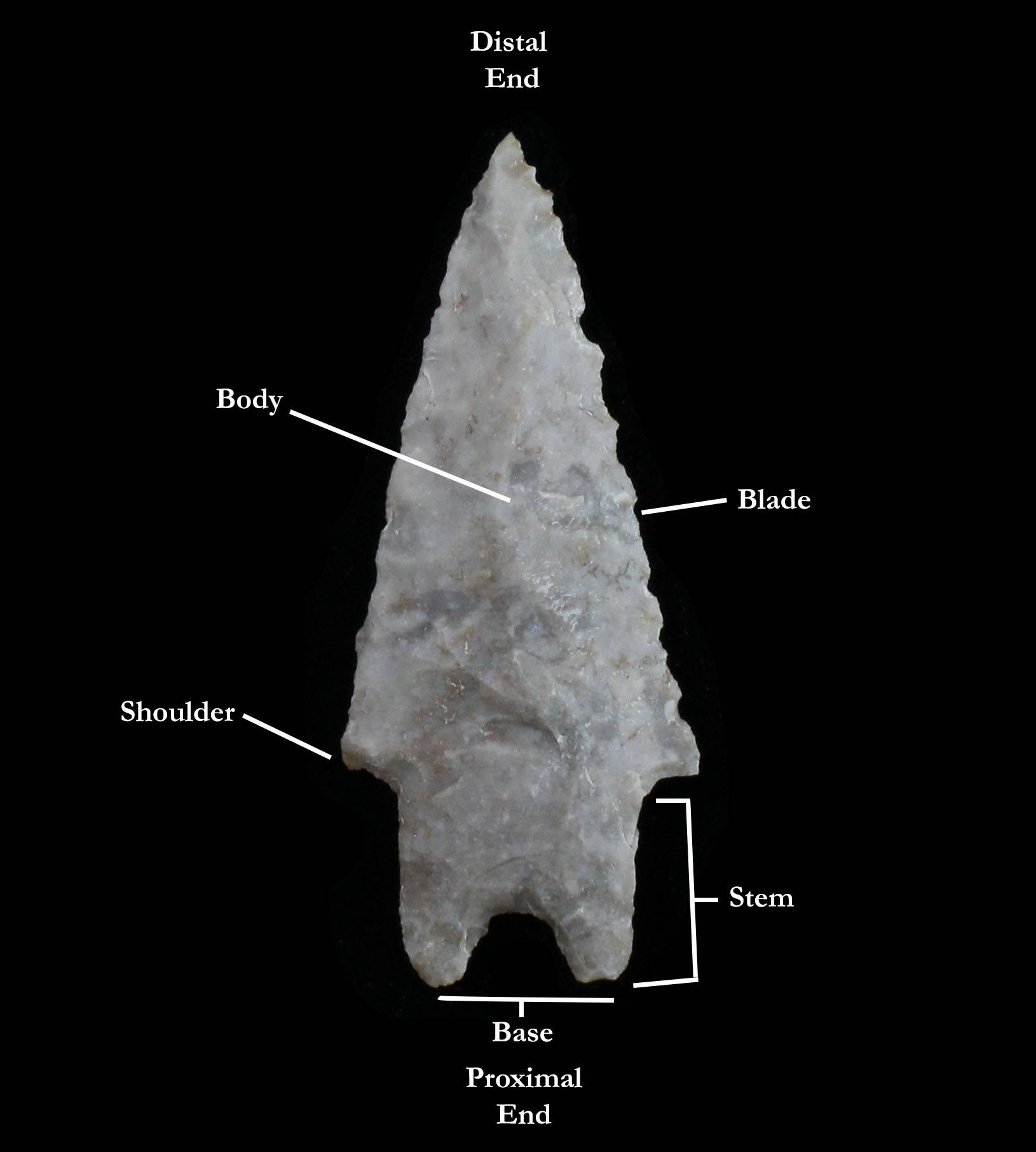Projectile Point Typology
Understanding Projectile Point Typology
Lithic artifacts like projectile points were often very labor intensive to produce, and at various times and places the raw material used to make them - chert - could be in short supply. Because of this, indigenous peoples would often simply resharpen a dart point that had broken during use. Sometimes they would resharpen the point so many times that it would be little more than a tiny point of chert on the dart shaft.
So, if dart points can look so different and still be the same type, how can archaeologists tell the difference? Because when an archaeologist studies a dart point to determine its type, the overall shape of the blade isn't the first thing they look at.
First, the archaeologist will look at the stem and base of the point, the area where the projectile would have been hafted to the shaft. This area remains very similar in appearance to its original design, since the base of a hafted projectile is completely covered and protected. Second, the archaeologist will look at how the point was made. They'll look at the flaking pattern - the order in which flakes were removed from the piece. They might also look for evidence of ground edges, or the presence or absence of elements like shoulders or barbs. A history of the point may be determined based on the changes made to it over time. Only after looking for all of these elements, can a definitive type be assigned to the point.

